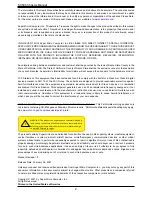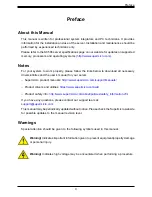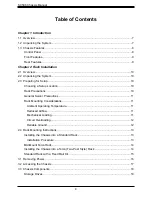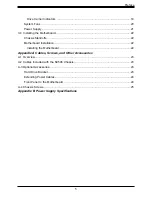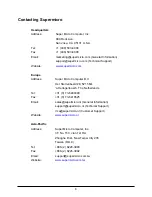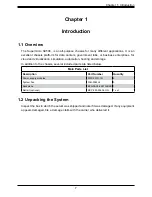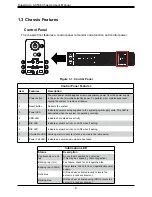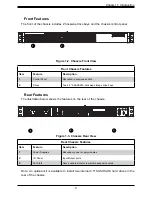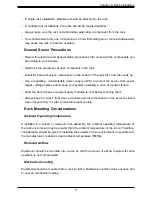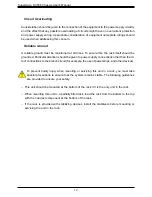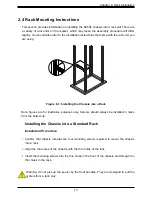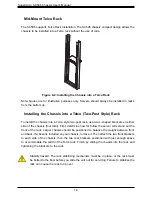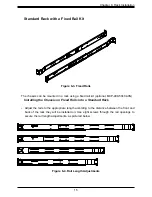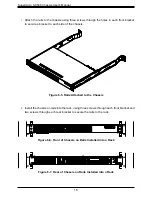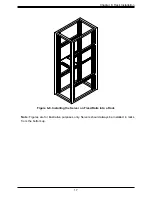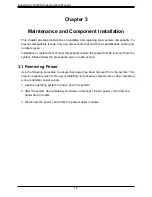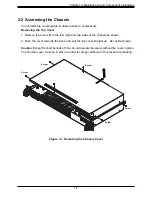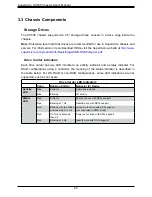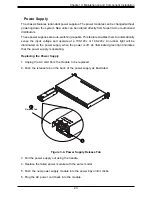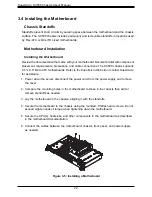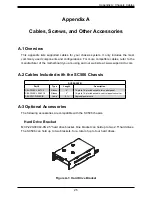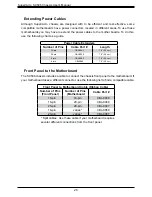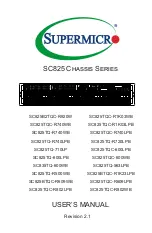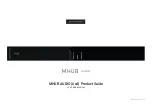
11
Chapter 6: Rack Installation
•
In single rack installation, stabilizers should be attached to the rack.
•
In multiple rack installations, the racks should be coupled together.
•
Always make sure the rack is stable before extending a component from the rack.
•
You should extend only one component at a time. Extending two or more simultaneously
may cause the rack to become unstable.
General Server Precautions
•
Review the electrical and general safety precautions that came with the components you
are adding to your chassis.
•
Determine the placement of each component in the rack.
•
Install the heaviest server components on the bottom of the rack first, and then work up.
•
Use a regulating, uninterruptible power supply (UPS) to protect the server from power
surges, voltage spikes and to keep your system operating in case of a power failure.
•
Allow the hard drives and power supply modules to cool before touching them.
•
Always keep the rack's front door, all panels and all components on the servers closed
when not servicing, in order to maintain proper cooling.
Rack Mounting Considerations
Ambient Operating Temperature
If installed in a closed or multi-unit rack assembly, the ambient operating temperature of
the rack environment may be greater than the ambient temperature of the room. Therefore,
consideration should be given to installing the equipment in an environment compatible with
the manufacturer’s maximum rated ambient temperature (TMRA).
Reduced Airflow
Equipment should be mounted into a rack so that the amount of airflow required for safe
operation is not compromised.
Mechanical Loading
Equipment should be mounted into a rack so that a hazardous condition does not arise due
to uneven mechanical loading.


